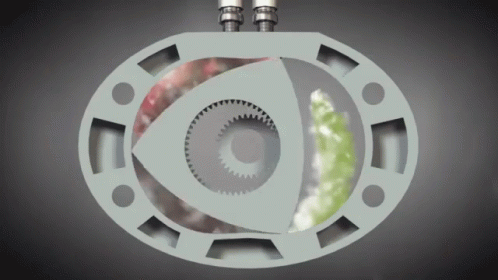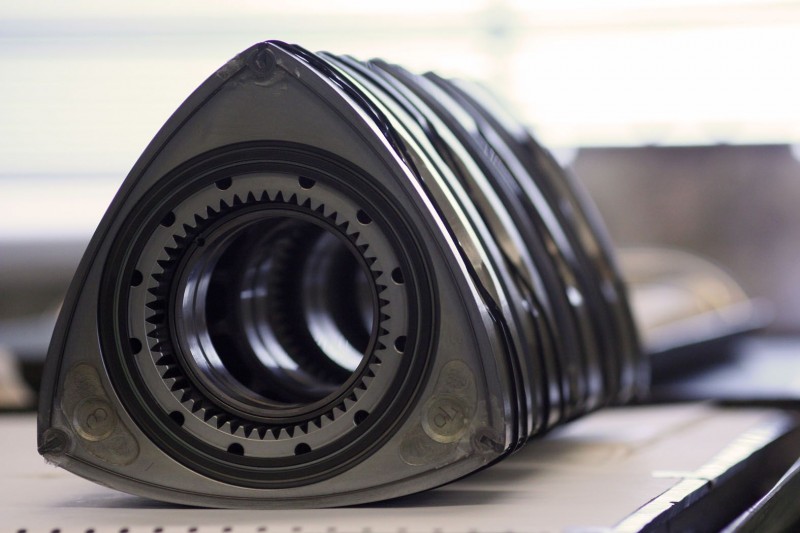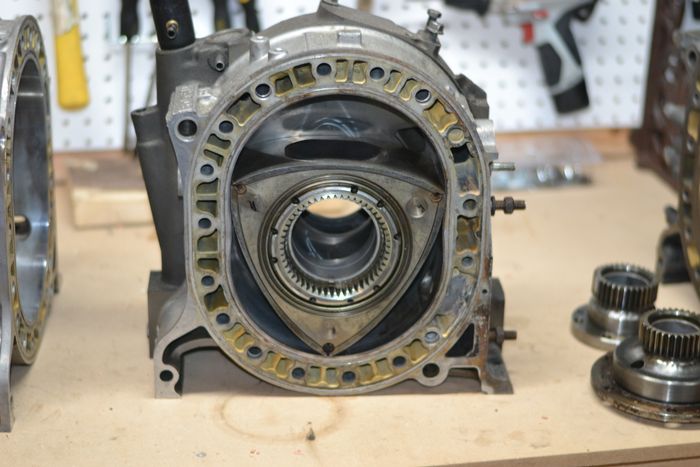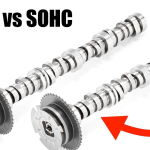Definition
rotary engines are internal combustion engine, like the engine in your car, but it works in a completely different way than the conventional piston engine.

In a piston engine, the same volume of space (the cylinder) alternately does four different jobs — intake, compression, combustion, and exhaust. A rotary engine does these same four jobs, but each one happens in its own part of the housing. It’s kind of like having a dedicated cylinder for each of the four jobs, with the piston moving continually from one to the next.
The rotary engine (originally conceived and developed by Dr. Felix Wankel) is sometimes called a Wankel engine, or Wankel rotary engine.
Principles of Rotary Engines
Like a piston engine, the rotary engine uses the pressure created when a combination of air and fuel is burned. In a piston engine, that pressure is contained in the cylinders and forces the pistons to move back and forth. The connecting rods and crankshaft convert the reciprocating motion of the pistons into rotational motion that can be used to power a car.
In a rotary engine, the pressure of combustion is contained in a chamber formed by part of the housing and sealed in by one face of the triangular rotor, which is what the engine uses instead of pistons.
The rotor follows a path that looks like something you’d create with a Spirograph. This path keeps each of the three peaks of the rotor in contact with the housing, creating three separate volumes of gas. As the rotor moves around the chamber, each of the three volumes of gas alternately expands and contracts. It is this expansion and contraction that draws air and fuel into the engine, compresses it, and makes useful power as the gases expand, and then expel the exhaust.
We’ll be taking a look inside a rotary engine to check out the parts, but first, let’s take a look at a new model car with an all-new rotary engine.

Mazda RX-8
Mazda has been a pioneer in developing production cars that use rotary engines. The RX-7, which went on sale in 1978, was probably the most successful rotary-engine-powered car. But it was preceded by a series of rotary-engine cars, trucks, and even buses, starting with the 1967 Cosmo Sport. The last year the RX-7 was sold in the United States was 1995, but the rotary engine is set to make a comeback in the near future.
The Mazda RX-8, a new car from Mazda, has a new, award-winning rotary engine called the RENESIS. Named International Engine of the Year 2003, this naturally aspirated two-rotor engine will produce about 250 horsepower. For more information, visit Mazda’s RX-8 Web site.
Parts of Rotary Engines
A rotary engine has an ignition system and a fuel-delivery system that are similar to the ones on piston engines. If you’ve never seen the inside of a rotary engine, be prepared for a surprise, because you won’t recognize much.
Rotor
The rotor has three convex faces, each of which acts like a piston. Each face of the rotor has a pocket in it, which increases the displacement of the engine, allowing more space for air/fuel mixture.

At the apex of each face is a metal blade that forms a seal to the outside of the combustion chamber. There are also metal rings on each side of the rotor that seal to the sides of the combustion chamber.
The rotor has a set of internal gear teeth cut into the center of one side. These teeth mate with a gear that is fixed to the housing. This gear mating determines the path and direction the rotor takes through the housing.
Housing

The housing is roughly oval in shape (it’s actually an epitrochoid — check out this Java demonstration of how the shape is derived). The shape of the combustion chamber is designed so that the three tips of the rotor will always stay in contact with the wall of the chamber, forming three sealed volumes of gas.
Each part of the housing is dedicated to one part of the combustion process. The four sections are:
- Intake
- Compression
- Combustion
- Exhaust
The intake and exhaust ports are located in the housing. There are no valves in these ports. The exhaust port connects directly to the exhaust, and the intake port connects directly to the throttle.
Output Shaft
The output shaft has round lobes mounted eccentrically, meaning that they are offset from the centerline of the shaft. Each rotor fits over one of these lobes. The lobe acts sort of like the crankshaft in a piston engine. As the rotor follows its path around the housing, it pushes on the lobes. Since the lobes are mounted eccentrically to the output shaft, the force that the rotor applies to the lobes creates torque in the shaft, causing it to spin.
For more press here









